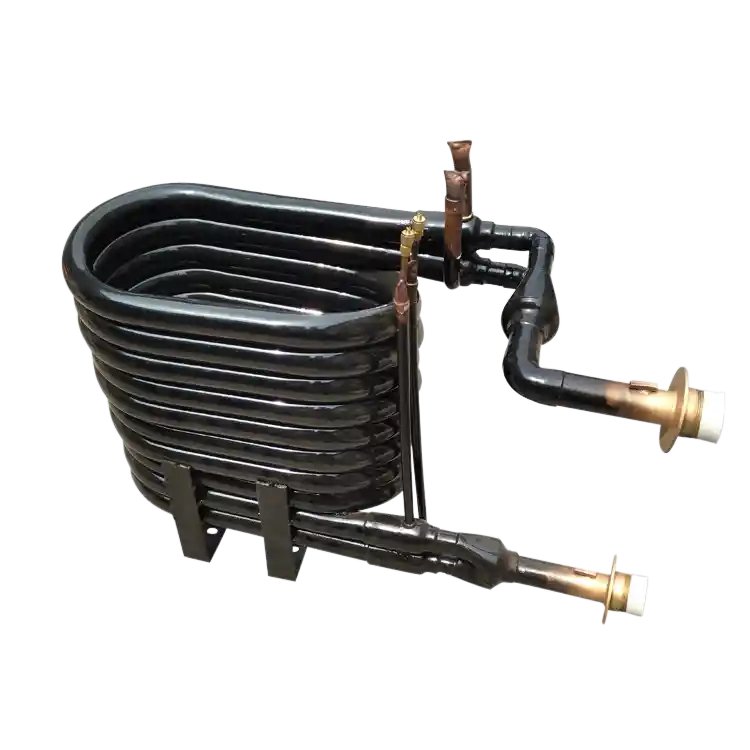Introduction
The assembly and connection process is a crucial stage in the production of coaxial heat exchangers. This article explores the significance of assembly and connection in the fabrication of coaxial heat exchangers and its impact on the overall performance and reliability of these devices. We will discuss the key steps involved in the assembly and connection process, highlighting the importance of proper techniques, materials, and considerations to ensure efficient and durable connections in coaxial heat exchangers.
1. Importance of Assembly and Connection
The assembly and connection of coaxial heat exchangers are critical for achieving optimal performance and longevity. This section explains the significance of proper assembly and connection techniques.
1.1 Structural Integrity
Proper assembly and connection techniques ensure the structural integrity of the coaxial heat exchanger. A well-assembled heat exchanger can withstand operational stresses, pressure differentials, and potential external forces, ensuring long-term reliability and performance.
1.2 Leak Prevention
Effective assembly and connection techniques help prevent leaks in the heat exchanger system. Properly sealed connections and joints eliminate the risk of fluid leakage, which could lead to system inefficiencies, performance degradation, and potential safety hazards.
1.3 Heat Transfer Efficiency
Efficient assembly and connection techniques contribute to improved heat transfer efficiency in coaxial heat exchangers. Proper alignment and connection of the inner and outer tubes minimize thermal resistance, allowing for efficient heat exchange and optimized energy consumption.
2. Assembly Process
The assembly process involves several key steps, including component preparation, alignment, connection, and sealing. This section provides an overview of the assembly process for coaxial heat exchangers.
2.1 Component Preparation
Before assembly, all components of the coaxial heat exchanger should be inspected and prepared. This may involve cleaning, deburring, and ensuring the proper dimensions and tolerances of the components. Thorough preparation ensures smooth assembly and proper functioning of the heat exchanger.
2.2 Alignment
Alignment is a critical step in the assembly process. Proper alignment ensures the accurate positioning of the inner and outer tubes, maximizing heat transfer efficiency and minimizing stress concentrations. Alignment can be achieved through precise measurements, fixtures, and alignment tools.
2.3 Connection Techniques
Various connection techniques can be employed in coaxial heat exchangers, depending on the design and materials used. Common connection methods include brazing, welding, soldering, and mechanical connections. Each technique has its advantages and considerations in terms of strength, durability, and ease of assembly.
2.4 Sealing
Sealing is essential to prevent leaks and ensure the integrity of the heat exchanger system. Sealants, gaskets, or O-rings are commonly used to provide a reliable and durable seal at the connection points. Proper sealing materials and techniques should be selected based on the operating conditions and compatibility with the heat exchanger materials.
3. Considerations for Assembly and Connection
Several considerations should be taken into account during the assembly and connection process to ensure optimal performance and reliability of coaxial heat exchangers. This section highlights key factors that manufacturers should consider.
3.1 Material Compatibility
Compatibility between the materials used in the heat exchanger components and the connection techniques is crucial. Different materials may require specific connection methods or additional surface treatments to ensure proper bonding and avoid material degradation or corrosion.
3.2 Joint Design
The joint design plays a significant role in the strength and reliability of the connection. The design should consider factors such as stress concentration, thermal expansion, and ease of assembly. Proper joint design minimizes the risk of joint failure and ensures long-term performance.
3.3 Quality Control
Quality control measures are essential during the assembly and connection process to verify the integrity of the connections. Regular inspections, leak testing, and quality assurance protocols should be implemented to identify any defects or deviations and take corrective actions promptly.
3.4 Safety Considerations
Safety should be a top priority during the assembly and connection of coaxial heat exchangers. Proper handling of materials, adherence to safety regulations, and use of appropriate personal protective equipment (PPE) are essential to prevent accidents or injuries during the assembly process.
4. Comparative Analysis of Connection Techniques
Different connection techniques offer varying benefits and considerations. This section presents a comparative analysis of common connection techniques used in coaxial heat exchangers, highlighting their strengths, limitations, and suitable applications.
| Connection Technique | Strengths | Limitations | Suitable Applications |
|---|---|---|---|
| Brazing | High joint strength, good heat transfer, and corrosion resistance | Requires high temperatures and specialized equipment | High-performance heat exchangers in demanding applications |
| Welding | Excellent joint strength and durability | Limited to compatible materials, potential distortion of components | Heavy-duty heat exchangers in industrial settings |
| Soldering | Lower temperatures, suitable for heat-sensitive materials | Lower joint strength compared to brazing or welding | Residential and light commercial heat exchangers |
| Mechanical | Easy installation and disassembly, suitable for frequent maintenance | Relies on mechanical fasteners, potential for joint loosening | Heat exchangers with regular maintenance requirements |
Conclusion
The assembly and connection process significantly impact the performance, reliability, and safety of coaxial heat exchangers. By employing proper techniques, considering material compatibility, and implementing quality control measures, manufacturers can ensure efficient assembly, reliable connections, and optimal heat transfer performance. Furthermore, the selection of appropriate connection techniques based on the specific requirements of the heat exchanger design enhances overall performance and longevity. A well-executed assembly and connection process are essential for achieving the desired efficiency and functionality of coaxial heat exchangers in various applications.


